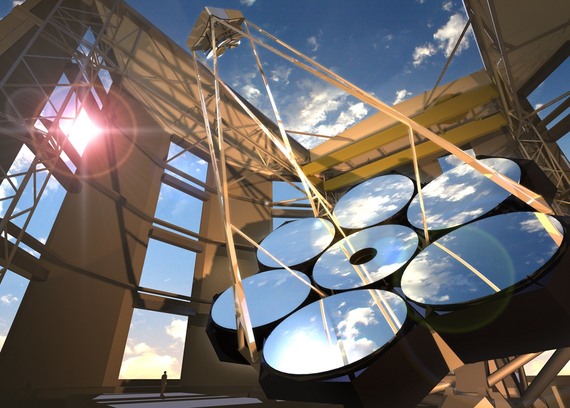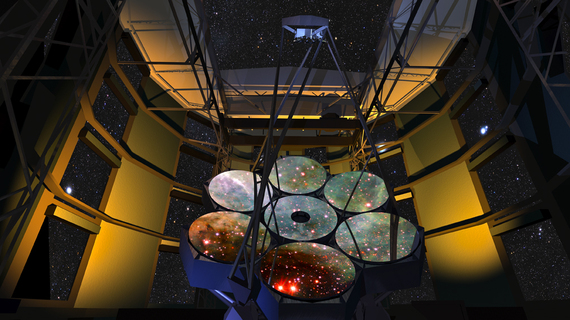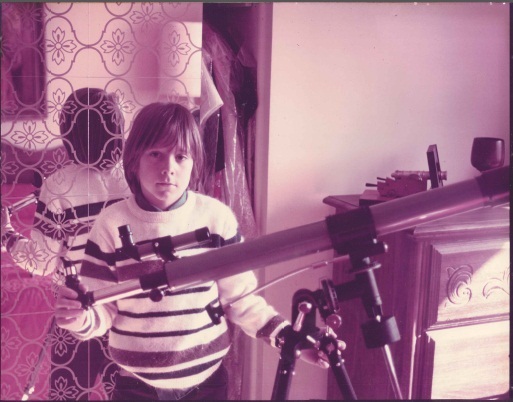My ongoing journey in science started at age 9 with a colorful book about astronomy. This was followed by a 10th-birthday gift of a small telescope -- the seed of my current effort to build the world's largest astronomical observatory. Like many successful scientists, my early development was heavily influenced by a few dedicated professional educators. Exceptional teachers in the sixth and 10th grades kindled in me a lifelong love of science, an enduring curiosity, and a penchant for critical thinking that has served me well in many aspects of life.
STEM Is at Risk in the U.S.
Each new generation introduces a new culture and a unique educational challenge. A recent survey commissioned by Junior Achievement USA and the ING U.S. Foundation found that interest in science, technology, engineering, and math (STEM) is declining among today's teens. Last year there was a 15-percent drop in their intent to pursue careers in STEM-related fields.
This decrease comes at a critical time for astronomy. Increasingly ambitious and technically demanding endeavors take years, or even decades, to complete. This means that the tools we design and build in the present will offer opportunities to scientists in the future. Inspiring the next generation of astronomers and keeping them engaged will be essential if we are to make the most of the opportunities offered and address some of humanity's most enduring questions.
The Most Important Discoveries Are There for the Next Generation to Make
Today efforts are underway to build the largest telescope in human history, the Giant Magellan Telescope (GMT). Once fully operational, the GMT will have 10 times the resolution of the Hubble Space Telescope and will give us the ability to see fainter and more distant celestial objects. The telescope's cutting-edge technology is designed to help scientists explore distant Earth-like exoplanets, young stars and galaxies and perhaps even answer the question "Are we alone in the universe?"
Rendering of the Giant Magellan Telescope, slated to begin operations in 2021
The work involved in creating such a colossal telescope must be matched by the energy invested in inspiring and preparing future astronomers to use it. To do our part in that role, the Giant Magellan Telescope Organization (GMTO) is teaming up with the world-renowned McDonald Observatory at the University of Texas at Austin to host the Giant Magellan Telescope Teacher Workshop.
Starting next week, the program will bring together eighth- through 12th-grade teachers from around the country with top professors and astronomers to learn how to educate middle- and high-school students about astronomy and the GMT project. Teachers will learn hands-on activities to teach their students about fundamental properties of light, diffraction, and reflection. They'll also learn about how those properties apply to the use of telescopes and how the design of the GMT represents some of the most advanced thinking in the field.
The goal of the program is to empower the people who can impact students for years to come. We plan to complement the program in Texas with additional online resources and new opportunities for teachers and students to interact with our astronomers.
By bringing these lessons to classrooms across the nation, GMTO and the McDonald Observatory hope to spark a lifelong interest in astronomy among students who are just beginning to plan their futures. Perhaps some of these students will be the very people who will use the GMT to make the next groundbreaking discoveries.
It All Starts at Home
My experience isn't unique. Many great minds have noted that their interest in science was kindled early on by encouragement from their parents and teachers. I've tried to pass along my interest in science to the next generation in my extended family during their critical formative years. I'm happy to report that there is a young physicist in the family, as well as two aspiring biologists.
I challenge parents to introduce science to their children early, and teachers to encourage all their students to explore interests in STEM. By enrolling them in STEM classes or even urging them to stargaze at the night sky, you could inspire them to become the next Galileo, Ride, Hubble or Hawking!
Me with my first telescope at age 10


